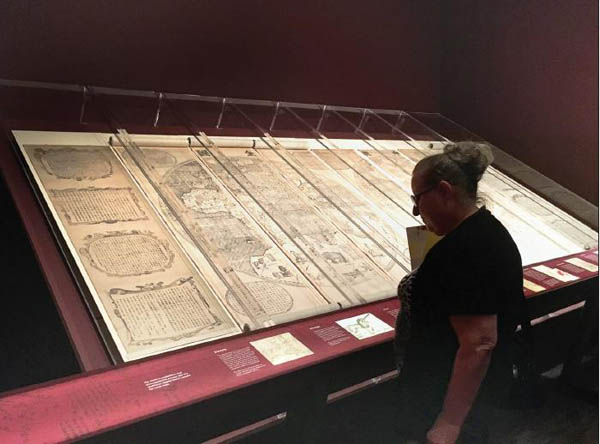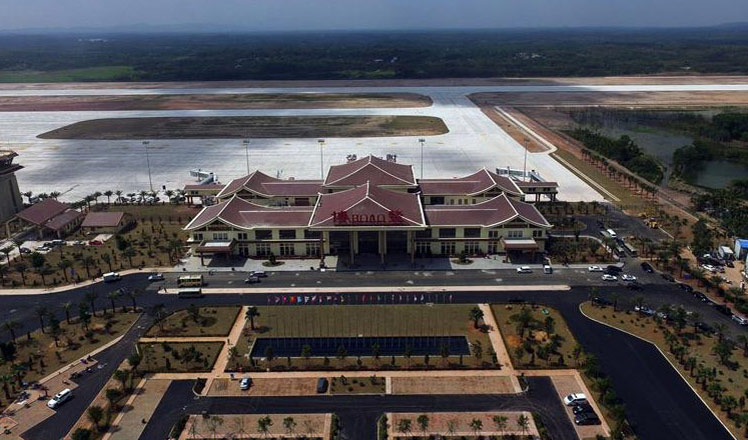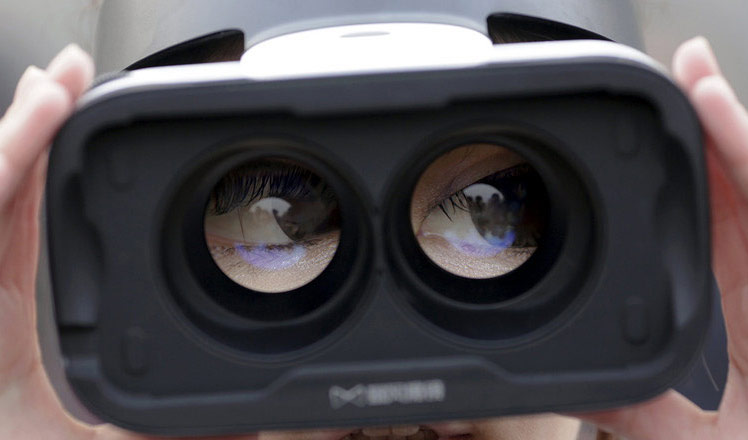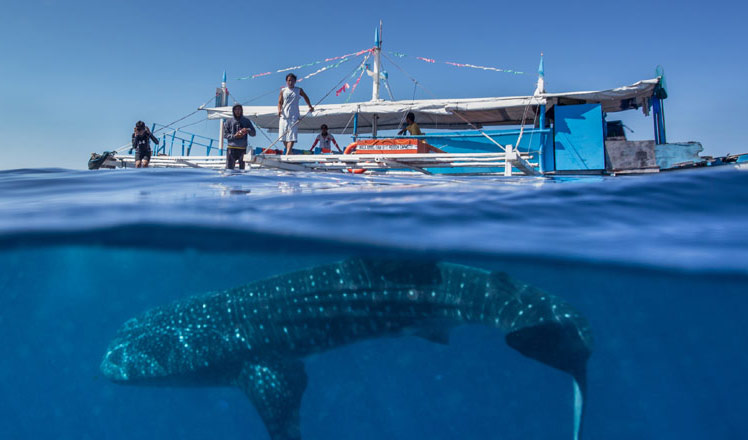Maps show first meeting of East, West
Updated: 2016-03-03 12:12
By Lia Zhu in San Francisco(China Daily USA)
|
||||||||
 |
|
A visitor studies the 400-year-old Verbiest Map on display at the Asian Art Museum in San Francsico on Wednesday. LIA ZHU / CHINA DAILY |
Museum-goers in San Francisco now have the chance to trace the momentous first meeting of East and West to two rare 400-year-old maps jointly crafted by Chinese and European scholars.
The exhibition China at the Center will present Matteo Ricci's A Complete Map of the Ten Thousand Countries of the World (1602) and Ferdinand Verbiest's A Complete Map of the World (1674) at the Asian Art Museum in San Francisco (March 4 through May 8).
The two massive woodblock-printed maps, made for Chinese emperors Wanli of the Ming Dynasty (1368-1644) and Kangxi of the Qing Dynasty (1644-1911), are the products of a collaboration of European Jesuit missionaries and Chinese scholars in the 17th century.
Combining European sources as well as the Chinese knowledge of Asia, the maps placed the Americas to the east, and Eurasia and Africa to the west, with China and the Pacific Ocean positioned near the center - evidence that the "Central Kingdom" was only a small part of a larger world.
"The production of these two artifacts bears witness to an openness of mind and heart to those different from ourselves and willing to share knowledge as we explore the world together rather than separately," said M. Antoni J. Ucerler, S.J., co-curator of the exhibition and the director of the Ricci Institute for Chinese-Western Cultural History at the University of San Francisco.
"It's about imagination, it's about accommodating and forming new views of the world from a different perspective within our own perspective," he said.
The Ricci map, which measures roughly 5 by 12 feet, was made by Matteo Ricci (1552-1610), the first Westerner allowed entry into the Forbidden City, in collaboration with Chinese scholars.
The map, printed on paper using carved wood blocks, was the first Chinese map to show the Americas and also the oldest extant map to incorporate Eastern and Western cartography.
The surface is covered with text, including names and information about the geography of the world and the customs of the people.
The Ricci map is one of only six complete copies in existence and the only copy in the US. On loan to the Asian Art Museum, it is owned by the James Ford Bell Trust and held at the James Ford Bell Library at the University of Minnesota.
The Verbiest Map, made by Ferdinand Verbiest, is a testament to the power of imagination with fanciful descriptions of giants, unicorns and mermaids. The map also illustrates animals from North America like the turkey, the beaver from Europe and the chameleon from Africa.
On loan from the Library of Congress in Washington, the Verbiest map has never before been exhibited.
The maps didn't get everything right, such as describing California as an island, but they are significant in cultural and historical value.
"The process of producing it together and the unique moments in the East-West cultural history still have much to teach today about dialogue and cooperation," said Antoni, adding that, "We need that so badly today."
liazhu@chinadailyusa.com

 Boao airport all set for upcoming Asian forum
Boao airport all set for upcoming Asian forum
 Snapshots from the 'two sessions'
Snapshots from the 'two sessions'
 Turn of virtual reality cameras at two sessions
Turn of virtual reality cameras at two sessions
 China's home-made expedition mothership 'Zhang Qian' to be launched in March
China's home-made expedition mothership 'Zhang Qian' to be launched in March
 Top 10 countries boosting China's tourist inflows
Top 10 countries boosting China's tourist inflows
 Airplane restaurant to open in Wuhan
Airplane restaurant to open in Wuhan
 World premiums at Geneva Motor Show
World premiums at Geneva Motor Show
 China's top 10 tech startups
China's top 10 tech startups
Most Viewed
Editor's Picks

|

|

|

|

|

|
Today's Top News
What ends Jeb Bush's White House hopes
Investigation for Nicolas's campaign
Will US-ASEAN meeting be good for region?
Accentuate the positive in Sino-US relations
Dangerous games on peninsula will have no winner
National Art Museum showing 400 puppets in new exhibition
Finest Chinese porcelains expected to fetch over $28 million
Monkey portraits by Chinese ink painting masters
US Weekly

|

|







